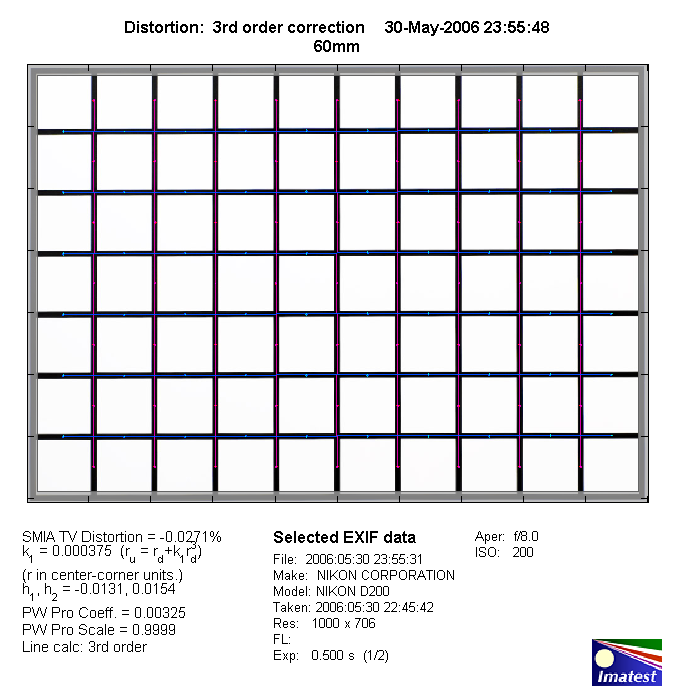|
Micro-Nikkor AF 60mm f/2.8 D - Review / Test Report - Analysis |
|
Lens Reviews -
Nikon / Nikkor (APS-C)
|
|
Page 2 of 3
Distortion
The Micro-Nikkor produces distortion-free results. At only 0.03% the level is only
detectable under lab conditions.

The chart above has a real-world size of about 120x80cm.
Vignetting
Thanks to the sweet spot behavior on the D200 vignetting is very well controlled and
it is no problem to use this lens at the max. aperture setting (f/2.8).

MTF (resolution)
Typical for most macro lenses the performance of the Micro-Nikkor is excellent
straight from the max. aperture setting. The center resolution is slightly better
at large to medium aperture settings but there's really little to complain
about border performance anyway. The peak performance is reached at f/8 with
a perfectly even characteristic across the frame. Beyond medium aperture settings
diffraction is the limiting factor so better avoid very small apertures. Please note
that this is a physical limitation and not a design issue. Nonetheless the lens
performed comparatively well at f/32 (still not good though).
There are some rumors floating around the web stating that the lens performs
much better in macro mode than at standard distances. This was not recreatable during
the tests. The setup requires a camera to test chart distance of roughly
60x focal length - for this specific lens this translates to 3.6m. On the focus
scale of the lens this is only a fractional amount away from the infinity setting
and the results are just great here.
Please note that the MTF results are not directly comparable across the different systems!
Below is a simplified summary of the formal findings. The chart shows line widths per picture height (LW/PH) which can be taken as a measure for sharpness.
If you want to know more about the MTF50 figures you may check out the corresponding Imatest Explanations
Chromatic Aberrations (CAs)
Surprisingly the lens produced a rather pronounced degree of chromatic aberrations (color shadows
at harsh contrast transitions) specifically at large aperture settings. A peak of 1.5px on the
average at the image borders is very high for a fix-focal lens. Stopping down reduces
the problem reaching very decent values from f/5.6 onwards.

|